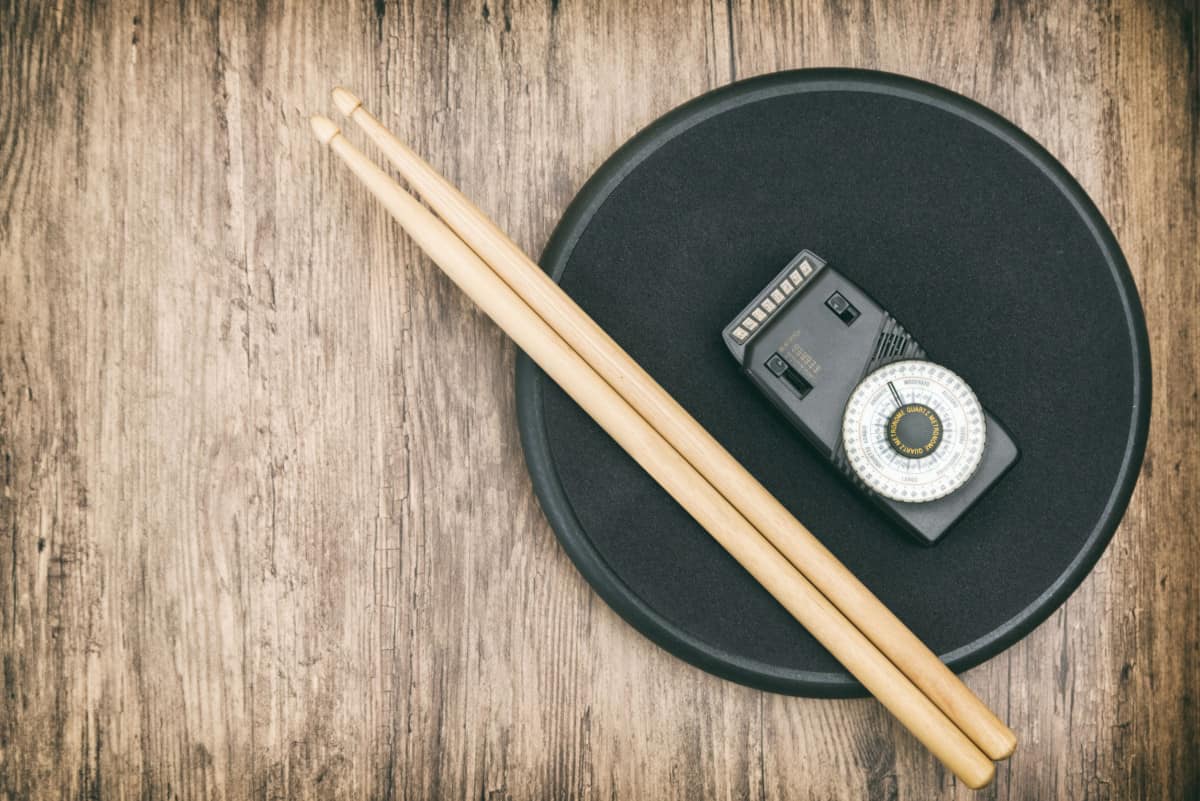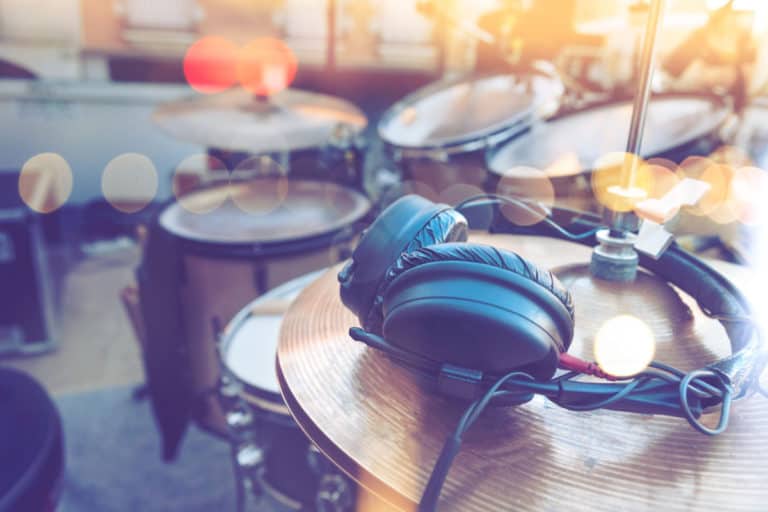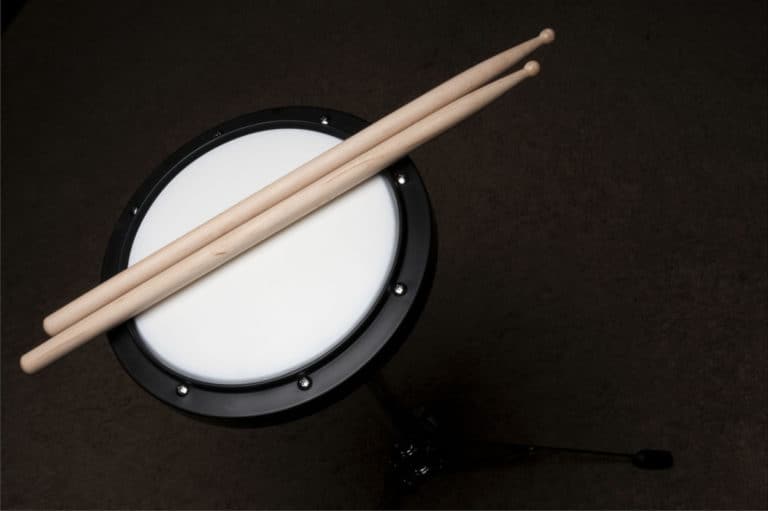Do Drummers Use Metronomes to Keep Their Tempo?
In my time being a drummer, I encountered many different opinions on whether you should or should not use a metronome to keep the tempo. I will summarize what I heard and what I researched to give you an excellent answer to this question once and for all.
Nowadays, most drummers use a metronome as a valuable practice tool for their inner clock. It’s essential to use it for practice sessions, recording, or live performances with integrated backing tracks. But for grooving with the music, many drummers don’t use a click to let the rhythm “breathe”.
The decision for each drummer to use or not to use a metronome is ultimately their own choice, in which they weigh up the pros and cons.
Do Drummers Use a Metronome?
Generally, it is getting more and more popular since more drummers and bands are using tracks and samples to enrich their live performances. Most drummers use a metronome, but they differentiate between the fields of application. In live environments, when touring with the very top artists, it’s probably around 90% or more to play with a click, except legends including Stevie Wonder, Rolling Stones, and a few other legends. In theatres, the majority now play with clicks, or the conductor will at least lead the orchestra with a click.
I divided the following parts of this post into the scenarios of where to use and don’t use a metronome, labeled as advantages and disadvantages.
The Advantages of Using a Metronome
The basic purpose of the metronome is to give a consistent beat to make you play in a constant tempo. This can be to practice certain rudiments on a practice pad, to record a song, or to play live, where backing tracks are already incorporated in a click track. But the use of a metronome for drummers has decisive reasons, which I will go into more detail in the following.
- Rhythmic accuracy. As an exercise tool, I like to use the metronome as a reference to monitor the rhythmic accuracy. The majority of drummers have trouble knowing when they are off-time and are often the first ones to accuse the other bandmates, sadly, where the solution is quite simply to practice with a metronome. Because by practicing with it, your inner clock will automatically develop and become better over time.
- Help the struggle with speeding up during fills. Particularly in song transitions (verse to chorus, chorus to bridge, etc.), drummers often struggle with speeding up while playing fills. Ideally, they should be played in time, with dynamic and feel. Practicing to play beats as well as fill-ins with a metronome will help with this struggle.
- Monitoring progress. It is essential to remember that if we want to increase the speed of something we are working on, we should keep the right gaps along the way. This applies to anything: Hand technique, double bass, grooves, all sorts of stuff. For example, when I was in a metal band, I needed to get my feet to speed up for 16th notes around the 200 bpm mark. So I’d play at 140 for 5 minutes, then 145, 150, 155, and so on until I reached my goal. This enabled me to monitor my progress and keep me motivated while moving forward.
- Having better sessions. Almost any recording session is performed using a click track. To practice using a metronome is a great way to be prepared for those situations where time is money. Many bands now integrate backing tracks into their live performance (added instruments, percussion, background vocals, etc.). You might improve and increase your odds of finding a job when you can play well with a metronome.
- Personal pride. With professional studio recording software, things can be so perfectly shredded and strung together that a drum track is often a simple copy and paste process instead of an authentic performance. But I think drummers need to aim to give a complete take from start to finish.
The Disadvantages of Using a Metronome
Although more and more bands are using a click track during their live performances, a popular argument against a metronome comes into play in terms of standard live settings. I would agree that it can sterilize the music, making the groove stiff and having the drums sound like a drum machine in extreme cases.
Lots of our music and drum heroes didn’t even own a metronome; they were developing a great time by rehearsing, playing, and just listening to a lot.
Geroge Marsh, a San Francisco-based jazz drummer, thinks that metronomes are okay, he uses them from time to time, but not as often:
Metronomes are perfectly even, and they do not breathe – there is neither ebb nor flow. They do not react to what you play; they are just there.
If you use metronomes incorrectly or too excessively, you run the risk of becoming overly dependent on them and, thus, don’t see any improvement in time or of developing your natural internal clock. This way, it can actually make your timing worse. But if you spend some time learning how to use the metronome correctly, this should not be a worrying topic for you.
My Concluding Advice
My main concern here is to find a proper balance. A metronome can be a useful measuring tool to track your progress and help you identify the right tempos, and it’s essential to enhance your skills as a modern, working drummer with a click track. The metronome may also help to make sure that the main components of a groove are played consistently. The idea is that these elements will grow more consistent with time for scenarios in which you don’t play with the metronome, like at a small gig.
Therefore, I am always encouraging my students to balance their use of a metronome with a big dosage of playing along to the music and with learning to develop their inner clock, because I think all good drummers should be able to keep their time well (and not end up like Andrew in this scene of Whiplash).
How to Best Practice With a Metronome
It might not be easy to get started learning a new skill, but by going along those following aspects, it can help to get you started and improve your metronome practice!
- Practice your weaknesses. Practice where you have the most difficulty, those bars at which you are derailing from the usual groove. Use a metronome to ensure that your weak points no longer are weak and improve the areas you are having trouble with. Loop three bars of groove and one bar with the whatever it is that is making it hard for you to stay in time. You’ll likely be pushing or pulling yourself according to what you play, though the more you hit it, the tighter you’ll get!
- Start slow before getting faster. The most apparent usage of a metronome is to assist drummers in slowing down tricky sections while maintaining a constant tempo. This way, you can work through difficult bars error-free and slowly raise the tempo as you get used to it.
- An efficient way to develop tempo is to identify a problematic passage and isolate it during practice and locate the shortest note value in that section. Then, adjust your metronome to, for example, 60 BPM and rehearse through the section with the shortest note value equal to 60 BPM. For instance, if the shortest note value is a sixteenth note, then practice the section so that each sixteenth note is one beat, and each eighth note is two beats, etc. When you have done this correctly for a couple of times, increase the speed of the metronome until you are as fast as you like!
- Vary the tempo. Change the tempo so that you can play the beats and fills at ANY speed. For some drummers, some tempos are harder to play than others, so work at those speeds the most. Test the metronome at several different tempos and check out which ones are your weak points and get to work on them.
- Move the first beat. Why does the click of the metronome need to be on the downbeat? When you swing or play reggae, you could do some incredible things for your sound by shifting the beat! Unless you put the beat 1 of the metronome on the first bar, you can get nuts and shift by a sixteenth note, you’ll have fun getting down to the groove and swing of the stuff!
- Practice Practice Practice the fills. As I mentioned above, accelerating or slowing down during drum fills is something that happens to every drummer. It is quite common to speed up fills at slow tempos or to accelerate at fast tempos. When practicing fills with the help of the metronome, be sure to maintain them in the context of the groove. Practice in groups of four bars, using three measures of groove and one measure of fill, or two measures of groove and two measures of fill.







